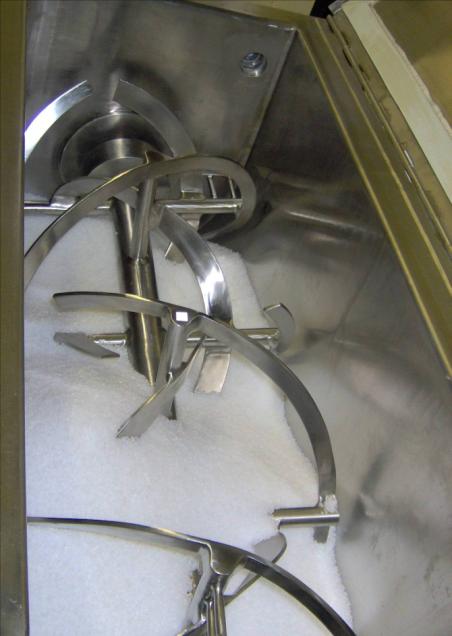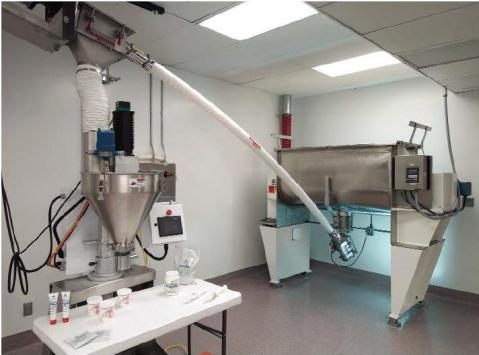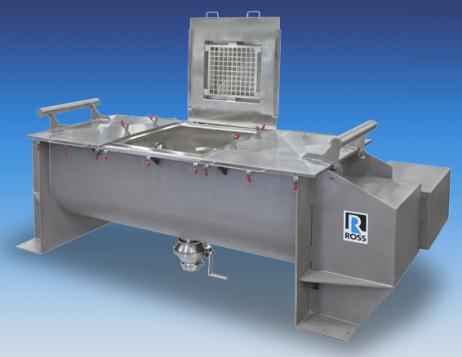Tech Report
Guard against product migration in your Ribbon Blender.

Technology Brief
This bulletin presents some tips for efficiently containing powders in a Ribbon Blender to ensure operator safety, prevent cross-contamination and promote easier clean-up.
Safe, clean and contained powder blending
The Ribbon Blender is well-proven technology for fast and cost-effective blending of powders. Product is mixed within a U-shaped trough via a horizontal agitator consisting of inner and outer helical ribbons. The precise pitch on each ribbon produces a well-balanced axial and radial flow pattern.
One important safety consideration surrounding this operation is the containment of powders during the blending cycle as well as during transport to and from the blender. Aside from a safety standpoint, proper powder containment also ensures consistent blend quality from batch to batch, easier clean-up and long equipment service life.
Some blender features and practices to consider:
- Do not overfill the blender. In a typical operation, ingredients are loaded into the vessel while the agitator is at rest. At full working capacity, product level would be around the outer ribbon`s tip. Well-designed blenders have deep enough troughs to provide sufficient headspace for the powders to be vigorously agitated.
- Equip your blender with dust-tight covers. These typically feature a product compatible gasket lining and clamps to reduce dusting and fume migration.Gasket-less covers made from heavier material can also be supplied for sensitive applications requiring very low maintenance.
- Customize covers and charge ports to match powder feeding equipment. This will not only minimize dusting but also allow the agitator to be run during powder charging. This practice is required for blenders not equipped with soft start features and recommended for certain applications where cycle time is critical. Special openings and man ways should include dedicated safety features such as grates and limit switches. A vent port with a dust sock can be used to capture fugitive airborne particles.

- In addition to the cover, theRibbon Blender`s discharge valve arrangement must also be dust-tight. Wet formulations such as pastes and slurries require even better sealing, i.e.a liquid-tight valve. Typical styles include slide-gate, butterfly, knife-gate, flush plug and spherical disc valves. Ball valves are commonly used for vacuum/pressure applications.
- When blending very fine powders or looking to keep as much of the product as possible from penetrating the packing, install lantern rings on the stuffing boxes. Shaft run-out may allow small amounts of very fine particles to migrate between the packing and the shaft which could lead to material bleeding out, contaminating the next batch or causing unnecessary wear. Low pressure compressed air forced into the packing through the lantern rings creates a positive pressure barrier that prevents intrusion of fine powders into the seal.
Sample Application: Pharmaceutical Blends

A manufacturer of prescription tablet formulations is using a 100-cu.ft. Ross Sanitary RibbonBlender equipped with a custom three-piece cover. The center cover is designed to be a bag dump station and includes a 30" x 30"hatch with its own cover and safety grating (flat perforated 2" x 2"square openings). Toggle clamps prevent dust particles from escaping the blender.